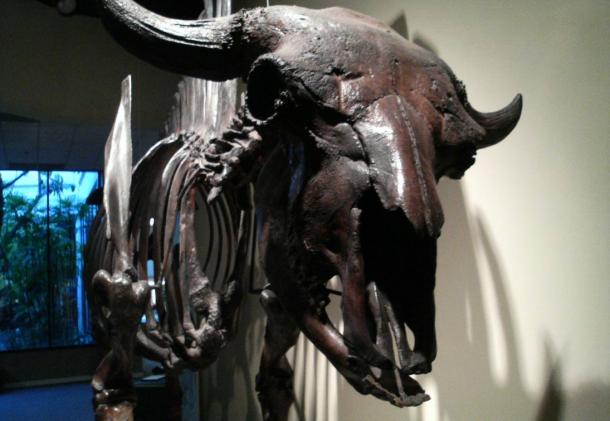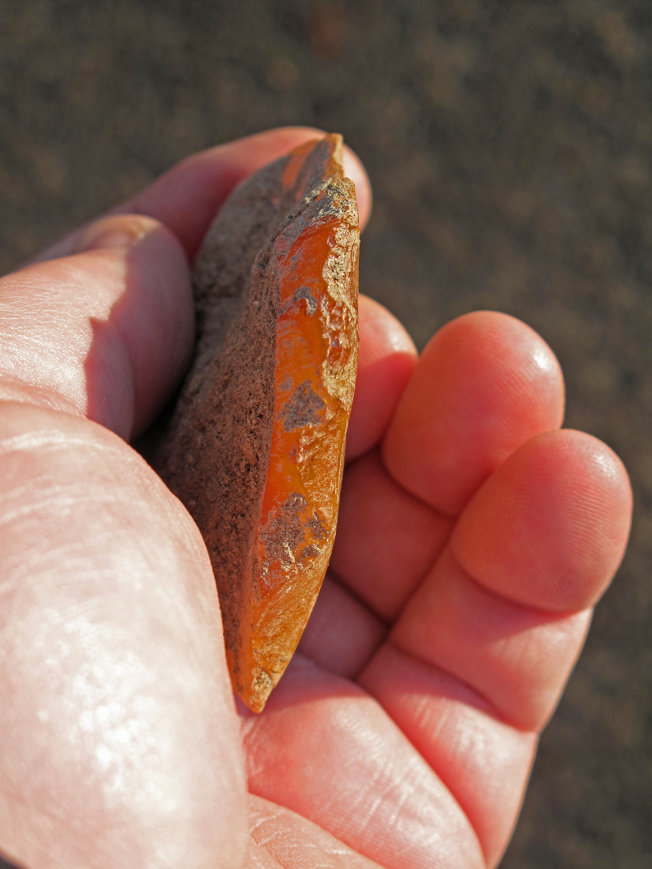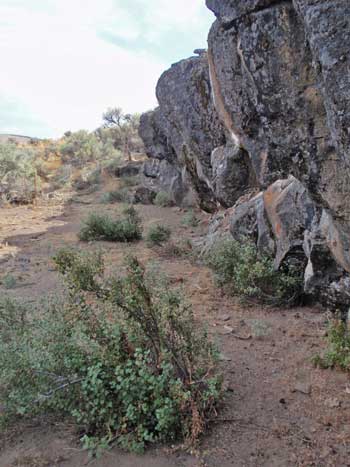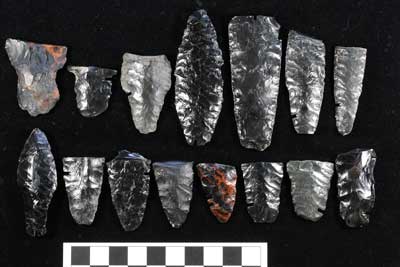Archaeologists Unearthed a 15,800 Year Old Stone Tool In Oregon
Recently, an artifact that was unearthed in Oregon and was identified as an “ ancient Swiss army knife,” may have been the oldest artifact so far found in western North America.
The simple stone tool, hewn from a piece of bright orange agate, was unearthed near a shallow cave that has already turned up evidence of early human occupation — including stone points, tools, and charcoal-stained hearths — dating back as much as 12,000 years. But this artifact was found even deeper in the region’s sandy clay, beneath a layer of volcanic ash that experts have found to be 15,800 years old. If its age is confirmed, the tool would be nearly 3,000 years older than the widespread artifacts of the Clovis culture, once thought to be the continent’s earliest inhabitants.
“This is really exciting,” said Stephen Baker, spokesman for the Oregon office of the U.S. Bureau of Land Management, in an interview. “But of course there’s more research to do.” The hand-sized tool was first unearthed in 2012 by the University of Oregon’s archaeology field school, at a site in south-central Oregon known as Rimrock Draw Rockshelter, on BLM land. The fact that it was found beneath — and was therefore presumably older than — the layer of ancient ash was “fascinating” in itself, Baker said. After a chemical analysis of the artifact revealed that it also contained traces of proteins from bison, confirming that it had been used as a tool.


“Getting this bison residue further corroborated the idea that it was a tool, likely used for butchering,” Baker said. Dr. Patrick O’Grady of the University of Oregon, who has been leading the excavations, said that the discovery came about after his field school uncovered debris from an ancient rockfall near the cave.
“Our excavation units had reached a jumbled layer of rockfall that appeared to be the result of a collapse of portions of the rock shelter face,” O’Grady said in an interview.
“We wanted to break that material up and clear a path so we could continue excavating to the bedrock underneath.” Beneath the debris, the team found large fragments of tooth enamel from an extinct species of camel. And beneath those, they hit a sudden, even layer of volcanic ash and rock, called tephra. Experts from Washington State University analyzed the ash, and were able not only to radiocarbon date it to about 15,800 years ago, but were also able to isolate its source: Washington’s Mount St. Helen’s.

“We found the stone tool 20 centimeters under the Mount St. Helen’s tephra, in dense sandy clay sediment,” O’Grady said. Baker, of the BLM, said researchers quickly identified the object as a tool.
“When they found it, they kind of joked that it was like an ancient swiss army knife,” he said.
“One edge, they believe, was used for scraping animal hide, and another side that’s been worn down over the years they believe was used for carving wood or bone. So, there are a couple of theories, but they think this is kind of a multi-purpose tool.”
The archaeologists were also struck by the tool’s unusual material, he added. It’s this bright orange agate, Baker said. “In that area, there’s a lot of obsidian, but they’d never seen this material in that area before. So it really raises a lot of questions.
“They’re fascinated with, how did this tool get here? Where did it come from? What did they use it for?”
O’Grady agreed that the use of agate is unusual for the region, and potentially significant.
“It is much less common in eastern Oregon sites than obsidian,” he said of the agate.
“My take is that older points tend to be made of [materials like agate] more often than obsidian.” For archaeologists, this new discovery readily invites comparison with a similar find made nearby — at Oregon’s Paisley Caves, just 200 kilometers away, wherein 2008 animal bones and human feces were found that dated to about 14,300 years ago. While those finds, too, remain controversial, both men acknowledge that the Paisley Cave samples gave scientists more to work with than what they have so far at Rimrock Draw.

The comparison with the Paisley Caves is just kind of inevitable, Baker said. Paisley Caves is just a perfect situation because there they found many, many samples. But in this situation [at Rimrock Draw], they have just a couple of pieces of evidence in one particular area that they need to expand and add more evidence too.
“So we’re in the very early stages of this.”
O’Grady agreed, adding that it’s too early to begin finding a place for Rimrock’s ancient orange tool in the timeline of American pre-history. We all know the significance of the Paisley Caves site, with the exquisite fieldwork, the sequence of radiocarbon dating, and well-dated human fecal material that has firmly placed the site among very few in the Americas that are established as pre-Clovis occupations, he said.
In an attempt to find a comparable body of evidence, he added, the coming field season at Rimrock Draw will be devoted largely to identifying the size of the 15,800-year-old layer of volcanic ash, and testing to see if more artifacts await beneath it. Rimrock has to produce strong dateable evidence through either cultural features or stratigraphic time markers to begin any conversation about its place in the realm on pre-Clovis sites,” O’Grady said.
“We have a hint of such a possibility through the association of the orange flake tool 20 centimeters under the Mount St. Helens tephra. But, it is only that — a hint — until we can show that the tephra is widely distributed across the site and that artifacts are found consistently underneath it.
“It is at that point that the work really begins,” he continued, “to verify the relationship in collaboration with other Paleoamerican researchers and conduct vast amounts of geological and archaeological analyses to firmly establish the relationship. It is that next step that must be approached very carefully, to watch warily for the older signs, and we are moving toward it with caution, but also with hopeful optimism.





